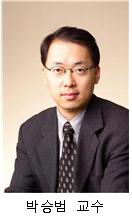The ministry of Education, Science, and Technology announced that a team of researchers led by Professor PARK Seung Bum of SNU's Department of Biophysics and Chemical Biology, who are also at Global Frontier Medicinal Bioconvergence Research Center (Bicon), developed a new method of detecting a target protein.
The attempts to discover bioactive small molecules that selectively control disease-related biological phenomena are now new in chemistry, medicine, and biology. But the difficult part was to reveal what materials affect which protein in human bodies, and this part was critical in developing new medicine by using bioactive small molecular materials. A plenty of bioactive small molecules failed to grow into a new medicine due to the difficulties of understanding the molecular mechanism. Even developed medicines were weeded out after showing side effects.
 Traditionally, to detect target proteins, researchers decomposed cells and then separated bioactive materials from other proteins from randomly mixed protein solution by mass spectrometric analysis. However, this process might be different from the real process in cells since this process finds target proteins after destroying the protein networks by decomposing cells. Therefore, this method was inefficient and unreliable because it was hard to find out target proteins among many other proteins.
Traditionally, to detect target proteins, researchers decomposed cells and then separated bioactive materials from other proteins from randomly mixed protein solution by mass spectrometric analysis. However, this process might be different from the real process in cells since this process finds target proteins after destroying the protein networks by decomposing cells. Therefore, this method was inefficient and unreliable because it was hard to find out target proteins among many other proteins.
The team led by Park invented a new method of entering directly into cells and using a hook that looks like a harpoon to extract target proteins. In other words, researchers combined the candidate materials for a new medicine with photoreaction materials, and then shed light to the cells to attach them with target proteins. As a consequence, correctly combined bioactive materials showed red color to be selectively detected. This new method has been termed ‘FITGE’, and it has been successfully applied to the
detection of target proteins that control the process that anti-cancer bioactive small molecules kill cancer cells.
Professor Park said that "The FITGE method will reveal the mechanism of candidate materials for a new medicine. This will enhance the efficiency and reliability of new medicine development."
Their research has been published as a cover page article of the prestigious chemistry journal 'Angewandte Chemie International Edition', and published online on April 4.
Written By PARK Ziho, SNU English Editor, snuitsm2@snu.ac.kr
Proofread by Brett Johnson, SNU English Editor, morningcalm2@gmail.com

